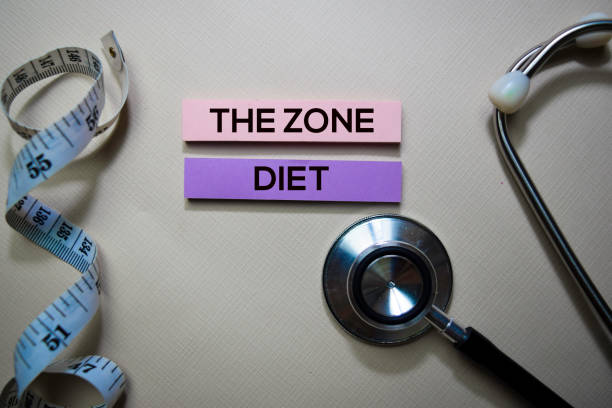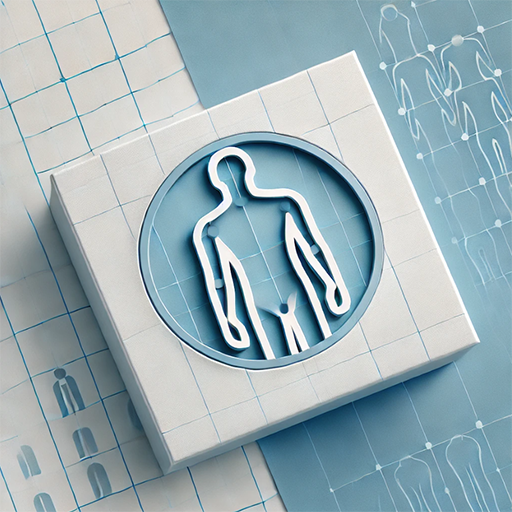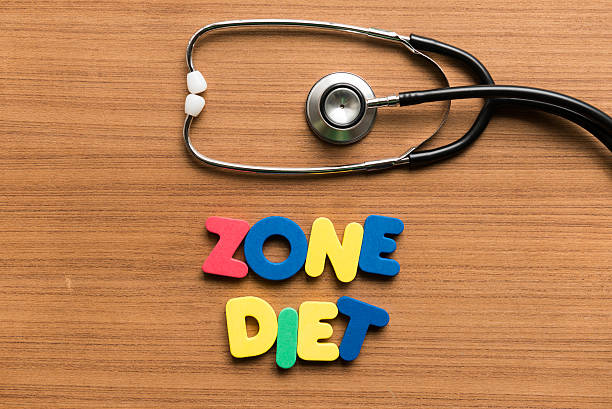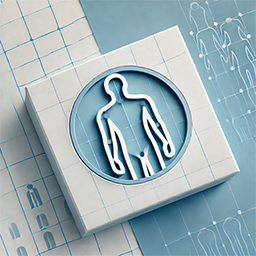Introduction to the Zone Diet
The Zone Diet is a well-known nutrition plan aimed at helping individuals achieve and maintain optimal health, lose weight, and boost energy levels. This diet focuses on balancing your intake of protein, carbohydrates, and fats in a specific ratio to support a healthy body and mind. Developed by Dr. Barry Sears in the 1990s, it has remained a popular choice for many and continues to be recommended by health experts today.
If you’re searching for a simple, sustainable way to manage your eating habits, this diet could be the perfect fit for you. In this guide, we’ll explain how the Zone Diet works, its numerous benefits, how to easily incorporate it into your lifestyle, and some potential drawbacks. Let’s explore all the details!
What is the Zone Diet?
The Zone Diet is all about eating in a way that keeps your body in a “zone,” where your hormones, like insulin and glucagon, are balanced for optimal performance. Dr. Sears created the Zone Diet based on the idea that controlling these hormones can improve overall health and help prevent chronic diseases like heart disease and diabetes.
The core principle of the Zone Diet is the 40-30-30 rule: your daily calories should come from 40% carbohydrates, 30% protein, and 30% fat. By sticking to these ratios, you maintain stable blood sugar levels, which reduces hunger and cravings while supporting fat loss.

The Science Behind the Zone Diet
Dr. Sears emphasizes that keeping your blood sugar stable is key to feeling full, energized, and mentally focused throughout the day. The diet encourages the consumption of low-glycemic carbohydrates, which are slowly absorbed into the bloodstream, helping to prevent blood sugar spikes.
On top of that, moderate amounts of healthy fats and lean proteins are also key components of the diet. These fats and proteins provide sustained energy and help you feel satisfied for longer periods. The goal is to keep your body in the “zone,” where it burns fat more efficiently and maintains overall health.
How to Follow the Zone Diet
The Zone Diet is easy to follow once you know the key principles. Here’s a simple guide to help you get started:
1. Understand the 40-30-30 Ratio
The foundation of the Zone Diet is balancing your macronutrients in a specific ratio for each meal:
- 40% Carbohydrates: Focus on nutrient-rich carbs like fruits, vegetables, and whole grains that provide energy and fiber.
- 30% Protein: Choose lean sources of protein, such as chicken, fish, eggs, or plant-based options like tofu and beans.
- 30% Fats: Include healthy fats in your diet, such as olive oil, avocado, and nuts, to support heart health and satiety.
By following this ratio, you can maintain a steady energy level throughout the day and keep your body in the “Zone” for optimal health.
2. Eat Smaller, Balanced Meals
It is different from many other diets that emphasize large meals or cutting calories drastically. Instead, it promotes eating smaller, balanced meals throughout the day to keep your energy steady and your metabolism active. Dr. Sears recommends having three main meals and two snacks daily. Each meal and snack should follow the 40-30-30 macronutrient ratio, ensuring you get the right balance of carbohydrates, protein, and fats. This approach helps control hunger, supports healthy blood sugar levels, and keeps you feeling satisfied.
3. Portion Control
Portion control plays a key role in the Zone Diet. It’s not only about selecting healthy foods but also about eating the right portions. To help with this, this diet uses a system called “blocks” to measure your food. Each block represents a specific amount of protein, carbohydrates, and fats, ensuring your meals stay balanced. For example:
- Protein block: 7 grams of protein
- Carb block: 9 grams of carbohydrates
- Fat block: 3 grams of fat
By using the block system, you can easily control portion sizes and make sure each meal follows the 40-30-30 macronutrient ratio. This helps maintain energy levels and supports your overall health goals.
4. Focus on Low-Glycemic Carbs
A core principle of the Zone Diet is to focus on low-glycemic carbohydrates. These foods are digested slowly, helping to prevent quick spikes in blood sugar levels. When you choose low-glycemic carbs, your body can maintain steady energy throughout the day. Excellent sources of low-glycemic carbs include fresh vegetables, fruits, and whole grains like oats and quinoa.
It’s important to avoid high-glycemic foods, such as white bread, sugary snacks, and heavily processed foods, as they can cause blood sugar levels to rise too quickly, leading to energy crashes. By making smart carb choices, you’ll support better overall health and stay on track with the Zone Diet’s goals.

Benefits of the Zone Diet
The Zone Diet provides a range of potential health benefits, making it a great choice for many people looking to improve their overall wellness. Some key benefits include:
1. Weight Loss and Fat Reduction
One of the main benefits of the Zone Diet is its ability to support weight loss and reduce body fat. By balancing your hormones and stabilizing your blood sugar levels, the Zone Diet helps prevent intense hunger and cravings. When your blood sugar is steady, you’re less likely to overeat or reach for unhealthy snacks, making it easier to maintain a healthy weight without feeling deprived. This approach helps you lose weight in a sustainable way while supporting your overall health.
2. Improved Mental Clarity
The Zone Diet helps provide consistent energy throughout the day, which can significantly boost your focus and mental clarity. With stable blood sugar levels, you’re less likely to experience the energy crashes that can lead to brain fog or fatigue. Many people following the Zone Diet report feeling more alert, clear-headed, and less tired. This steady energy can help you stay sharp and focused, whether you’re working, studying, or just going about your daily activities.
3. Better Blood Sugar Control
The Zone Diet is an excellent choice for managing blood sugar levels, making it particularly beneficial for individuals with type 2 diabetes or those at risk of developing it. By emphasizing low-glycemic carbohydrates, the diet helps keep blood sugar levels steady and prevents rapid spikes and drops. This stable blood sugar control can reduce the risk of complications related to diabetes and improve overall health. For those looking to maintain healthy blood sugar levels, the Zone Diet offers a sustainable and effective approach.
4. Reduced Inflammation
The Zone Diet encourages the consumption of anti-inflammatory foods, particularly those rich in omega-3 fatty acids, which can help reduce inflammation throughout the body. Chronic inflammation is known to contribute to a variety of health problems, including heart disease, arthritis, and autoimmune conditions. By focusing on foods like fish, nuts, and seeds, the Zone Diet helps lower inflammation levels, supporting better overall health and potentially reducing the risk of these chronic conditions. This approach can promote long-term wellness and help you feel better every day.
Potential Drawbacks of the Zone Diet
While the Zone Diet offers many benefits, it’s important to consider some potential drawbacks:
1. Requires Meal Planning
The Zone Diet requires careful meal planning and portion control. The block system may seem complicated at first, and you might need to spend extra time measuring your food. If you have a busy lifestyle, this could be a challenge.
2. Potential for Restriction
Some people may find the Zone Diet too restrictive, especially if they have trouble adhering to specific food portions or find it difficult to maintain the 40-30-30 ratio.
3. Not for Everyone
The Zone Diet may not be suitable for everyone. Those with specific dietary needs or medical conditions should consult with a healthcare provider before starting any new diet plan.

Zone Diet Food List: What to Eat and What to Avoid
To make things easier, here’s a quick breakdown of foods to eat and avoid on the Zone Diet:
Foods to Eat:
- Proteins: Lean meats (chicken, turkey), fish (salmon, tuna), eggs, tofu, beans
- Carbohydrates: Vegetables, fruits, whole grains (brown rice, quinoa), legumes
- Fats: Olive oil, avocado, nuts (almonds, walnuts), seeds (chia, flax)
Foods to Avoid:
- High-glycemic carbs: White bread, sugary snacks, soda
- Processed foods: Chips, fast food, packaged meals
- Excessive alcohol: While small amounts of alcohol can fit into the Zone Diet, excessive drinking may disrupt your blood sugar balance.
Is the Zone Diet Right for You?
The Zone Diet offers a balanced approach to eating, making it a great choice for those looking for long-term health and weight management. However, it’s important to consider your personal preferences, lifestyle, and health needs. Consulting with a healthcare professional or dietitian before starting the diet can ensure that it’s a good fit for you.
Conclusion: Take the First Step Toward a Healthier You
The Zone Diet is a flexible, balanced approach to nutrition that can help you achieve your health goals. By following the 40-30-30 ratio and focusing on whole foods, you can enjoy sustained energy, better weight management, and improved health.
Are you ready to try the Zone Diet? Start by making small changes to your meals and experiment with different food combinations. Remember, it’s not about perfection—it’s about creating lasting habits that make you feel good. Join the conversation below and share your thoughts or experiences with the Zone Diet!



